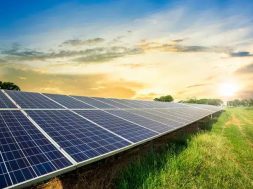
Hydrogen in Decarbonization Strategies in Asia and the Pacific
Green hydrogen produced by renewable energy could be a “game-changing” solution for both energy security and ambitious climate targets. The most promising applications of green hydrogen are those where renewable energy cannot be used, including decarbonizing hard-to-abate sectors, such as steel and cement; long-term and seasonal energy storage; and cross-border trade.
Global investment in green hydrogen is still small compared to investments in renewable energy, mainly due to the high costs. However, these costs are expected to significantly decline during 2030–2050. Asia and the Pacific is playing an important role in the move toward a society in which hydrogen will be vital for daily life and economic activities. National hydrogen strategies have already been developed in a growing number of countries in Asia and the Pacific, including Australia, India, Japan, New Zealand, the People’s Republic of China, the Republic of Korea, and Singapore, and are under preparation in many others.
Hydrogen in Decarbonization Strategies in Asia and the Pacific focuses on both importing and exporting countries of hydrogen and features innovative and insightful research examining hydrogen society development. The discussions aim to inform and be accessible to a broad audience, including policy makers and non-energy experts looking to stay abreast of the latest decarbonization trends in the region.
Related posts:
- Ministries want cut in bio-diesel GST, new bio-fuels policy
- JBIC Provides First Project Finance for Solar Power Generation Project in India
- Biggest Solar Power Plant in Uttar Pradesh set up through transparent auction under the Solar Park Scheme of New & Renewable Energy Ministry
- Intimation of Care Rating: BHEL – EQ Mag Pro














